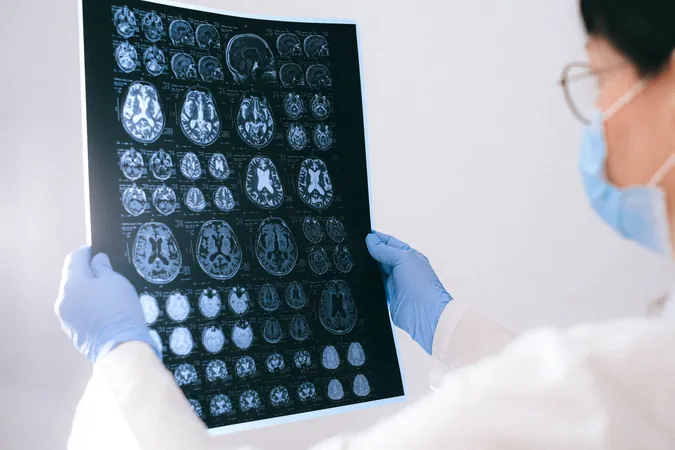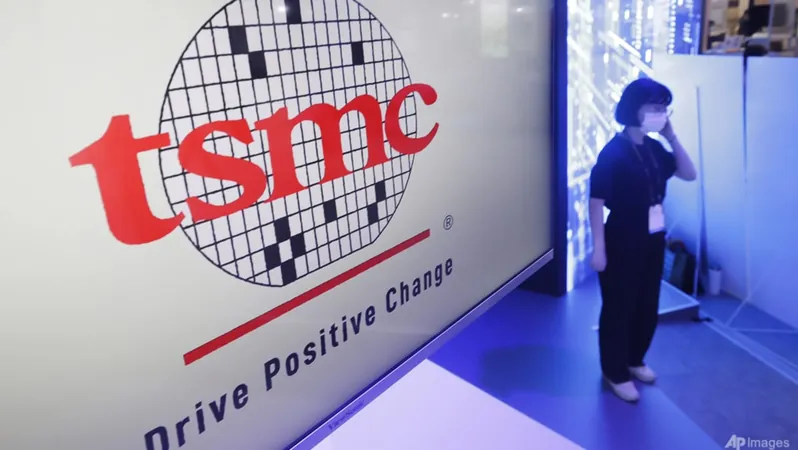
The AI Revolution: How Radiologists Are Gearing Up to Detect Brain Tumors with Unprecedented Accuracy!
2024-11-19
Author: Nur
The AI Revolution: How Radiologists Are Gearing Up to Detect Brain Tumors with Unprecedented Accuracy!
In a groundbreaking study titled "Deep Learning and Transfer Learning for Brain Tumor Detection and Classification," researchers have unveiled how artificial intelligence (AI) models can achieve remarkable accuracy in differentiating brain tumors from healthy brain tissue. According to the research published in *Biology Methods and Protocols*, these AI algorithms can now detect brain tumors in MRI scans nearly as effectively as skilled human radiologists.
The ongoing advancements in AI technology are transforming the medical field, particularly in radiology, where delays in processing medical images can hinder timely patient treatment. By employing powerful convolutional neural networks, scientists are training these AI models on extensive datasets of medical images, allowing them to identify and classify various conditions more efficiently.
One fascinating aspect of this research is the innovative use of "transfer learning." This technique allows AI models trained on one specific task—in this case, identifying camouflaged animals in images—to be adapted for another purpose, such as detecting tumors within complex medical imaging data. The researchers drew an intriguing parallel between camouflaged animals and cancer cells blending in with nearby healthy tissue, an analogy that has opened new pathways in image recognition.
In this retrospective study, data were derived from publicly available MRI datasets, including contributions from Kaggle, the NIH National Cancer Institute's Cancer Imaging Archive, and the VA Boston Healthcare System. Researchers meticulously trained the AI networks to differentiate between healthy and cancerous brain images, accurately locating the tumor sites and classifying the types of cancer presented.
The results were impressive, with one AI model achieving an accuracy rate of 85.99% in detecting brain cancer, while another model reached 83.85%. Notably, the networks exhibited significant proficiency in identifying normal brain images, only resulting in one or two false negatives—a remarkable achievement in the realm of medical diagnostics.
An essential feature of these AI models is their ability to provide clear explanations for their decision-making processes. This transparency is crucial, fostering trust among medical professionals and patients. Traditional deep learning models are often viewed as "black boxes," leaving users in the dark about how conclusions are reached. The newfound capability to articulate decision-making criteria enhances the collaboration between human radiologists and AI, ensuring safer and more reliable diagnostic assistance.
Moreover, future iterations of these models will focus on bolstering this explainability, making it easier for clinicians to understand AI assessments and integrate them into practice seamlessly. The researchers noted that while distinguishing between different brain cancer types presented challenges, the continued training in camouflage detection steadily improved the networks' overall performance.
Although the top-performing AI model was slightly less accurate—about 6%—than human detection standards, it demonstrated a significant leap in effectiveness due to the use of transfer learning. This innovative approach not only enhances the potential for accurate medical diagnoses but also advocates for transparency and reliability in AI applications in healthcare.
Arash Yazdanbakhsh, the lead author of the study, emphasizes the significance of these advancements, saying, "As AI technology evolves, it allows for more precise detection and recognition of medical patterns, facilitating better diagnostic processes and disease monitoring. This technology also underlines the essential need for explainability in AI, particularly in high-stakes environments like healthcare, where continuous communication between professionals and AI systems is paramount."
As we stand on the cusp of an AI-driven future in medicine, this groundbreaking research paves the way for potentially life-saving innovations in brain tumor detection. Stay tuned as the fusion of AI and healthcare continues to shape better medical outcomes for patients around the world!





 Brasil (PT)
Brasil (PT)
 Canada (EN)
Canada (EN)
 Chile (ES)
Chile (ES)
 España (ES)
España (ES)
 France (FR)
France (FR)
 Hong Kong (EN)
Hong Kong (EN)
 Italia (IT)
Italia (IT)
 日本 (JA)
日本 (JA)
 Magyarország (HU)
Magyarország (HU)
 Norge (NO)
Norge (NO)
 Polska (PL)
Polska (PL)
 Schweiz (DE)
Schweiz (DE)
 Singapore (EN)
Singapore (EN)
 Sverige (SV)
Sverige (SV)
 Suomi (FI)
Suomi (FI)
 Türkiye (TR)
Türkiye (TR)